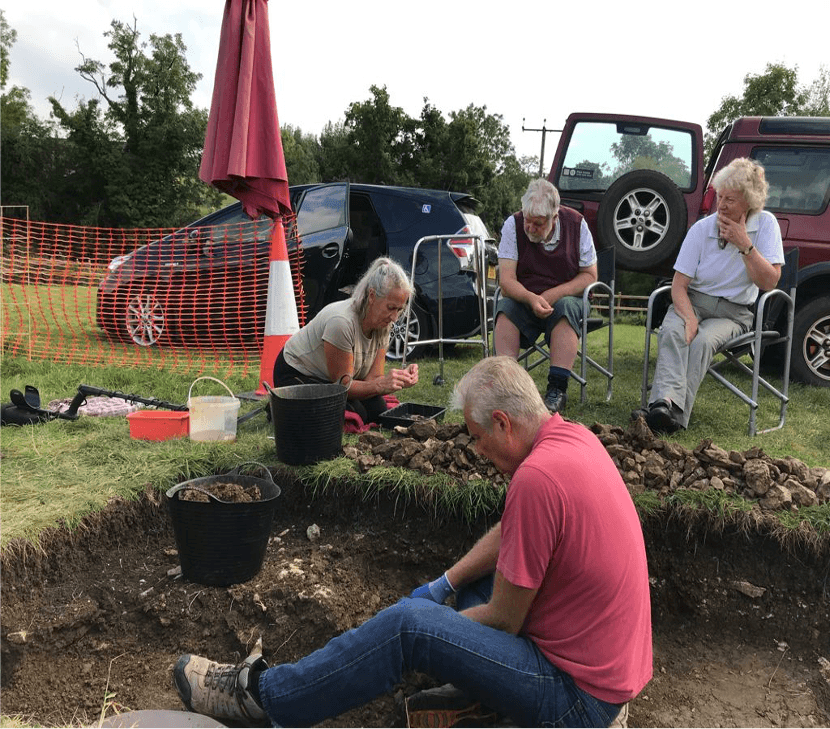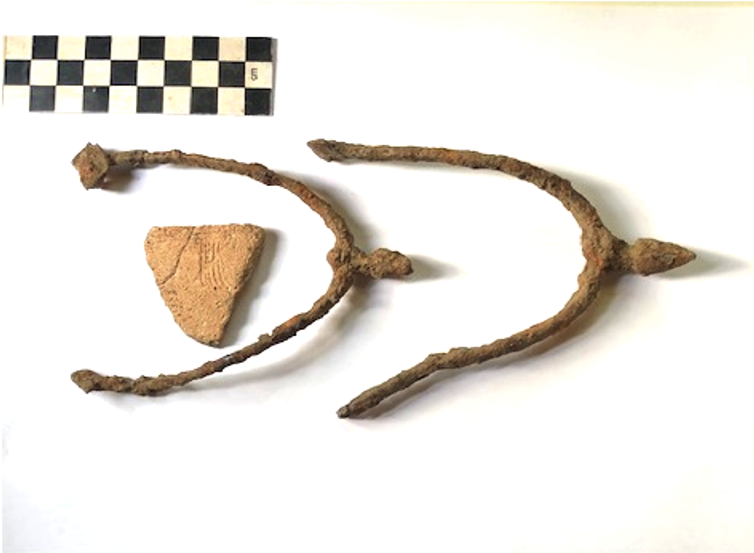Glebe Field Dig
Newsletter
Firstly I should introduce the main protagonists and reasons for the Glebe Field Dig. Zillah and I, David Savage, have owned, used and cared for the Glebe Field for over 20 years. Recently however, we have come to feel more like custodians of at the very least, a regionally important site. Aware of H.E.R. numbers relating to the site we investigated further. A very small evaluation trench was opened in 2019 which was to reveal a range of mediaeval to mainly 19thcentury finds, largely early Victorian field dressing including ceramics charcoal, nails and the like all clearly subjected to burning; not terribly exciting! But with no modern deep ploughing evident we were encouraged.
Post pandemic June 2021, guided by research and an excellent resistivity survey, carried out by local volunteers from Yate and District Arch. Group new trenches were dug; things were about to become much more interesting. Our first exploratory trench ran across a high resistance, low hump anomaly, near the apex of which, a pair of iron Saxo Norman spurs were found. Our excitement levels were already high as numerous medieval potsherds and metal finds had come to light. Then during the remainder of the dig season from only 28sq.metres of trenches we had round totals of 1400 potsherds, 200 metal finds, unworked quartz rose and yellow crystals, 500 pieces of butchered animal bones and a few stone tile fragments plus a beautiful pin beater weaving tool.


But the question really is had we advanced our knowledge further than it being perhaps a just mediaeval midden? Well yes we think we have. Taking into account the resistivity survey, the artifacts found, the history of the site, evidence of hot metal working and diverted spring water. Our current working hypothesis is that the Glebe Field had early ecclesiastical use, followed by an artisan metal workshop established upon the remaining building platform once vacated.
As we fast approach our May 2022 restart date. We have had meetings with our volunteers group to decide upon our new dig location. This will be upon an east to west rectilinear shape that is about 10metres by 8metres, which is in turn within a curvilinear enclosure. The trench will be the biggest to date measuring 12metre x 2metre running north to south. We are now looking for structures and think it’s our best hope of finding at least an earth floor; so great care will be needed. Finally, thank you to Mark, Penny and Stewart for their help, interest and encouragement in our archaeology venture.
